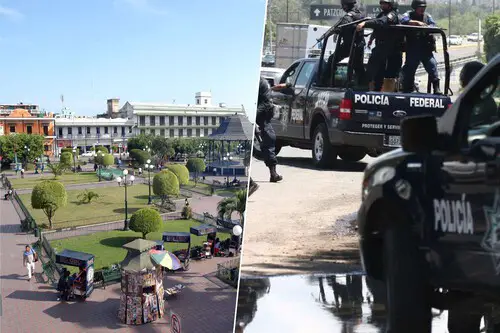Tampico, one of Mexico’s largest cities, was plagued by violence about a decade ago. However, due to the efforts of citizens who organized to eradicate it, the city is now considered one of the safest in Mexico.
Mexico has been facing a significant problem with violence, primarily driven by organized crime and its connection to drug trafficking. This has led to a situation where wars between cartels have become real civil wars, affecting not only companies but also a considerable portion of the population. The issue extends beyond direct violence against populations or collateral damage from gang wars, as people have had to change their daily habits to avoid becoming victims.
For instance, some individuals carry fake cell phones to hand over in robberies, and there have been cases where people directly finance organized crime due to gangs hacking into internet antennas. Despite this widespread problem, Tampico is a remarkable exception. A decade ago, it was dominated by organized crime but has since become one of the safest urban areas in Mexico.
The Turning Point: The Voluntary Curfew
Tampico is a port city located in the Huasteca region, an area of great cultural importance due to its proximity to the Atlantic and historical significance as a Mayan trading route. In 2010, residents decided to impose a voluntary curfew on themselves amidst the violence and chaos caused by the split between the Gulf Cartel and the Zetas.
The situation was dire: armed conflicts caught civilians in the middle, local criminal groups took advantage of the commotion, police officers were killed (their corpses displayed publicly), over 30 kidnappings occurred per month, and more than 100 homicides happened annually. The city’s residents were living in terror.
However, it was during this time that citizens organized and imposed a curfew on themselves to bring about change. This collective effort led to the creation of the Citizen Roundtable for Security and Justice of the Southern Zone of Tamaulipas, an alliance between army generals, high-ranking police officers, university rectors, and businessmen.
The roundtable’s primary goal was to address the root cause of organized crime: corruption. They realized that more than poverty or lack of opportunities for young people, corruption was the main issue. The authorities were often co-opted by organized crime, making it difficult to report crimes without being intercepted along the way.
To combat this, the roundtable launched campaigns to obtain funds to reinforce police infrastructure and create an independent complaints center not under local authority control. Their efforts have yielded impressive results:
– In three years, they tripled the number of police officers.
– In five years, they achieved zero kidnappings.
– Six years ago, Tampico became one of the safest cities in Mexico.
The community began to cooperate with the roundtable by reporting crimes, something previously unthinkable. The success can be attributed to the establishment of a reliable institutional framework that involves the community and facilitates complaints for authorities to do their job effectively.
Today, Tampico is an example for Mexico, demonstrating how citizens can come together to address violence and corruption. While it’s acknowledged that ending drug trafficking requires a broader effort from the state, Tampico’s experience shows what can be achieved with collective action and community involvement. The lessons learned in Tampico could be applied nationwide, potentially helping to combat organized crime more effectively.
Source: Xataka






